 Facebook
Facebook
 X
X
 Instagram
Instagram
 TikTok
TikTok
 Youtube
Youtube
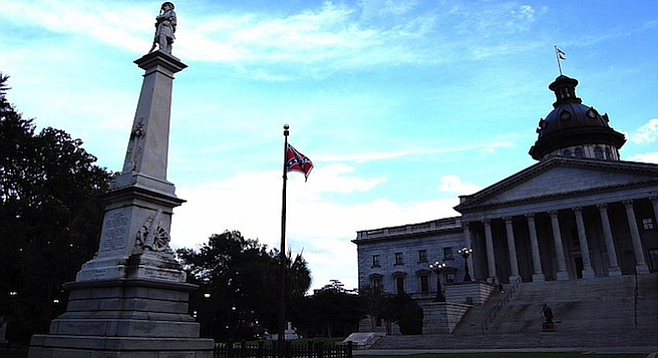
South Carolina is a state of contradictions, and nowhere is this more apparent than in its capital.
Last June, Kristin Morris, the Nickelodeon’s marketing manager, summed up contemporary South Carolina’s dichotomy, noting: “We’re a progressive arts educational program located six blocks from a state capitol building still flying the Confederate flag.” Located on Columbia’s vibrant Main Street, The Nick is a specialty cinema which recently converted what had been the "Blacks-only" balcony of Fox Theatre into an upstairs second space, screening first-run indies, film/video classes and regional film fests.
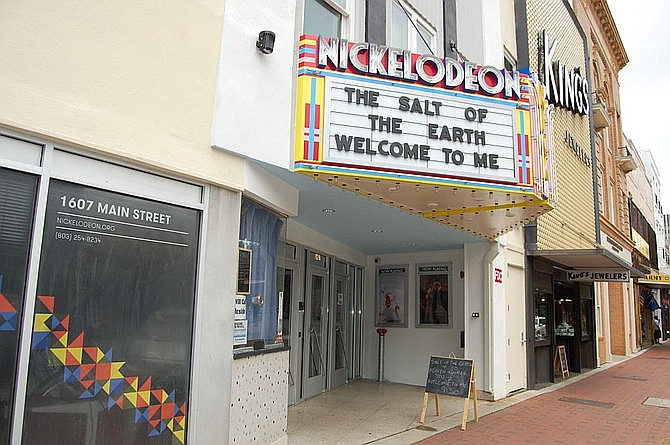
Since 2007, the Nick has co-produced the Indie Grits Festival, showcasing Southeastern cinematic, artistic, culinary and musical talents. “Blaktastik” screens African-American–themed films July 24-26, while this summer’s Southern Gothic series is projecting Dixie-set classics such as Deliverance and To Kill a Mockingbird on the big screen. Shortly after the 2015 Charleston massacre, the Nick screened local filmmaker Tom Hall’s new documentary Compromised about the Confederate flag flap at the statehouse and donated the proceeds to Emanuel AME Church.
Walking south down Main, you pass markers bearing text and images regarding key moments in Columbia’s Civil Rights struggle before reaching South Carolina’s blue granite, 180-foot-high copper-domed State House, with 22 Corinthian monolithic columns and six bronze stars marking where cannonballs fired by General Sherman’s struck the Greek Revival–style building 150 years ago.
The grounds of this National Historic Landmark is where a “pole-tergeist” occurred in July, when its flagpole and much-embattled Confederate battle flag were exorcised.
Along with magnolia trees, a statue of Dixie-crat Senator Strom Thurmond still stands there, as does the African-American History Monument, built on the capitol building’s east side as part of a compromise that removed the Confederate flag from the State House’s dome. Ed Dwight’s 2001 granite and bronze monument features 12 panels depicting Black history highlights and is the first-of-its-kind shrine at any U.S. statehouse.
Free tours are offered at the State House, and on the regular legislative session’s final day, knowledgeable guide Cathy Padgett led our group through the House Chamber, the lobby – filled, literally, with lobbyists currying favor at cookie-laden tables – and to the Senate.
D.W. Griffith’s 1915 The Birth of a Nation depicts S.C.’s Reconstruction-era legislators as stereotypical fried chicken–chomping, liquor-guzzling, barefoot buffoons. But Amanda Roper, guide at Charleston’s McLeod Plantation, asserted these freed African-American lawmakers actually passed legislation “ahead of its time.” Among those I saw June 4 on the Senate floor was Clementa Pinckney, S.C.’s youngest-ever elected state legislator, who’d be gunned down by a racist 13 days later at a Charleston church.
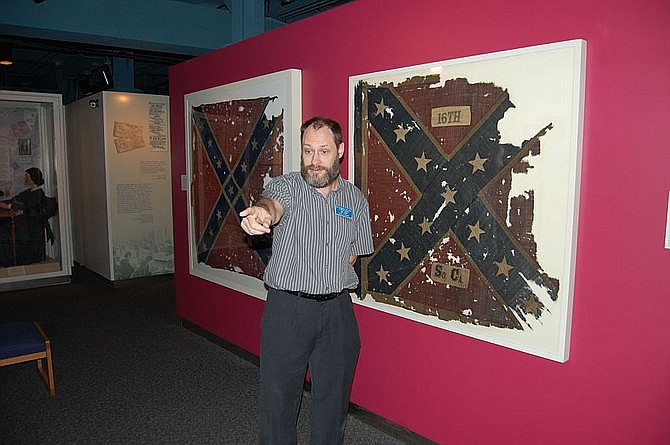
Originally founded in 1896 by the Daughters of the Confederacy, the Confederate Relic Room and Military Museum is now part of the State Museum (scmuseum.org), which includes a planetarium. The Relics Room is also a sort of observatory, where “Planet Civil War” is studied through displays, dioramas, audio, murals and artifacts galore. An informative wall text notes that blockade runner George Alfred Trenholm was a prototype for Gone With the Wind’s Rhett Butler. A son of the South, William Long, the facility’s curator of education, provided a compelling tour that brought history vividly back to life. Among those remembered and honored here are the five regiments of freed S.C. slaves who fought for the Union.
As this is the sesquicentennial of General Sherman’s Carolinas Campaign, which led to Columbia’s burning, a special “Paths of Destruction, Sherman’s Final Campaign” exhibit is currently being presented. That contentious rebel flag exiled from the Statehouse will, appropriately, be displayed at the Confederate Relics Room, which holds the biggest collection of S.C. flags.
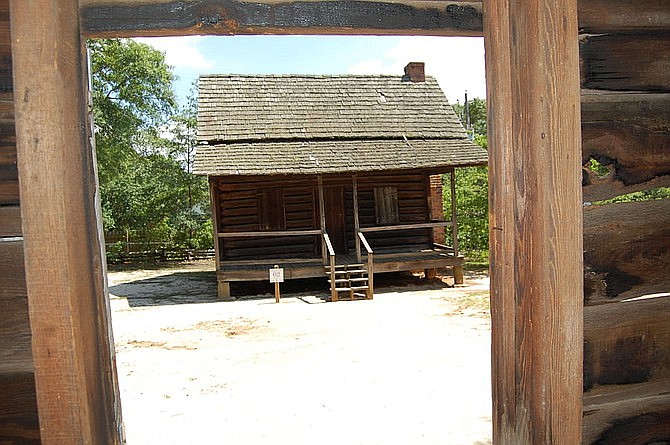
The Palmetto State may be history-steeped, but the Confederacy lasted only five years, and the Lexington County Museum offers a non-militarized look at the lives of ordinary South Carolinians from the Revolution to the War Between the States. In a suburb near Columbia, this mini-Williamsburg includes a series of well-preserved wooden structures that shed light on days gone by, including a beehive-shaped pigeon house, gin house, privy, one-room schoolhouse, humble log houses and its centerpiece, prominent politician John Fox’s comfortable home, with slave quarters.
As museum director J.R. Fennell put it during our tour, “If it wasn’t for sirens or cars going by you could imagine you’re in 1850.”
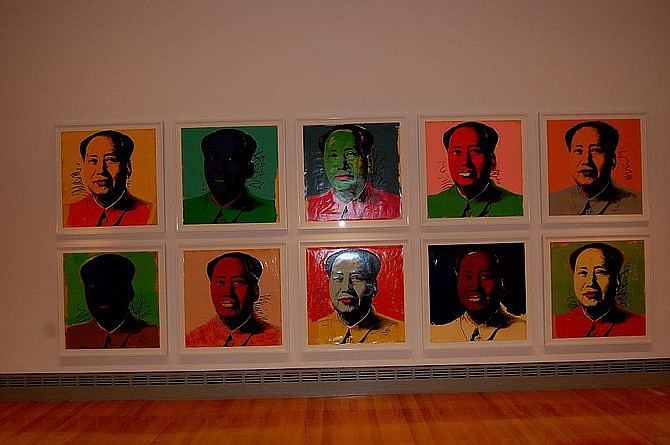
A treasure trove of paintings, statues and graphics, the Columbia Museum of Art is the hub of the capital’s thriving art scene. No backwater, this – Columbia’s admirable arts showcase boasts an original Botticelli and Monet, Frederick Remington’s 1895 bronze Bronco Buster, plus portraiture ranging from Charles Wilson Peale’s 1779 oil of General Washington to Andy Warhol’s 1960-70s silkscreens of Chairman Mao, Marilyn Monroe and other notables in a major exhibit of 55 “Famous Faces” rendered by the pop artist running through September 13.
Following this major Warhol retrospective, “Georgia O’Keeffe: Her Carolina Story”, celebrating the centennial of her teaching at Columbia College and S.C.’s influence on the painter, opens October 9.
As part of Columbia’s burgeoning cultural scene that has spearheaded Downtown’s revitalization, First Thursdays on Main is a trendy art crawl combining saloons, eateries and performing/creative artists & artisans along the capital’s top thoroughfare on the first Thursday of each month.
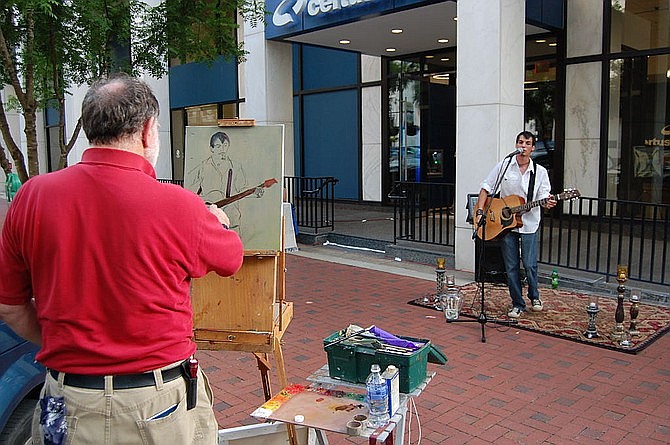
During June’s street fest, outside Centrus Bank I encountered a guitarist flanked by two painters with canvases on easels, daubing the musician live as he sang. Inside the bank paintings and jewelry were displayed and free appetizers and drinks dispensed.

From my centralized perch at the Sheraton Columbia Downtown Hotel I had easy access by foot to all of Main Street’s attractions and restaurants. Located inside of the stately 1913-built Palmetto Building, this Sheraton provides hospitable service, comfortable rooms, the Rooftop Lounge and Vault martini bar, ensconced in this former bank’s safe.
In all, I discovered that this Southern capital was a centerpiece of the state's rich heritage and culture as Columbia – named after Christopher Columbus – strides ahead into a more inclusive future.


South Carolina is a state of contradictions, and nowhere is this more apparent than in its capital.
Last June, Kristin Morris, the Nickelodeon’s marketing manager, summed up contemporary South Carolina’s dichotomy, noting: “We’re a progressive arts educational program located six blocks from a state capitol building still flying the Confederate flag.” Located on Columbia’s vibrant Main Street, The Nick is a specialty cinema which recently converted what had been the "Blacks-only" balcony of Fox Theatre into an upstairs second space, screening first-run indies, film/video classes and regional film fests.

Since 2007, the Nick has co-produced the Indie Grits Festival, showcasing Southeastern cinematic, artistic, culinary and musical talents. “Blaktastik” screens African-American–themed films July 24-26, while this summer’s Southern Gothic series is projecting Dixie-set classics such as Deliverance and To Kill a Mockingbird on the big screen. Shortly after the 2015 Charleston massacre, the Nick screened local filmmaker Tom Hall’s new documentary Compromised about the Confederate flag flap at the statehouse and donated the proceeds to Emanuel AME Church.
Walking south down Main, you pass markers bearing text and images regarding key moments in Columbia’s Civil Rights struggle before reaching South Carolina’s blue granite, 180-foot-high copper-domed State House, with 22 Corinthian monolithic columns and six bronze stars marking where cannonballs fired by General Sherman’s struck the Greek Revival–style building 150 years ago.
The grounds of this National Historic Landmark is where a “pole-tergeist” occurred in July, when its flagpole and much-embattled Confederate battle flag were exorcised.
Along with magnolia trees, a statue of Dixie-crat Senator Strom Thurmond still stands there, as does the African-American History Monument, built on the capitol building’s east side as part of a compromise that removed the Confederate flag from the State House’s dome. Ed Dwight’s 2001 granite and bronze monument features 12 panels depicting Black history highlights and is the first-of-its-kind shrine at any U.S. statehouse.
Free tours are offered at the State House, and on the regular legislative session’s final day, knowledgeable guide Cathy Padgett led our group through the House Chamber, the lobby – filled, literally, with lobbyists currying favor at cookie-laden tables – and to the Senate.
D.W. Griffith’s 1915 The Birth of a Nation depicts S.C.’s Reconstruction-era legislators as stereotypical fried chicken–chomping, liquor-guzzling, barefoot buffoons. But Amanda Roper, guide at Charleston’s McLeod Plantation, asserted these freed African-American lawmakers actually passed legislation “ahead of its time.” Among those I saw June 4 on the Senate floor was Clementa Pinckney, S.C.’s youngest-ever elected state legislator, who’d be gunned down by a racist 13 days later at a Charleston church.

Originally founded in 1896 by the Daughters of the Confederacy, the Confederate Relic Room and Military Museum is now part of the State Museum (scmuseum.org), which includes a planetarium. The Relics Room is also a sort of observatory, where “Planet Civil War” is studied through displays, dioramas, audio, murals and artifacts galore. An informative wall text notes that blockade runner George Alfred Trenholm was a prototype for Gone With the Wind’s Rhett Butler. A son of the South, William Long, the facility’s curator of education, provided a compelling tour that brought history vividly back to life. Among those remembered and honored here are the five regiments of freed S.C. slaves who fought for the Union.
As this is the sesquicentennial of General Sherman’s Carolinas Campaign, which led to Columbia’s burning, a special “Paths of Destruction, Sherman’s Final Campaign” exhibit is currently being presented. That contentious rebel flag exiled from the Statehouse will, appropriately, be displayed at the Confederate Relics Room, which holds the biggest collection of S.C. flags.

The Palmetto State may be history-steeped, but the Confederacy lasted only five years, and the Lexington County Museum offers a non-militarized look at the lives of ordinary South Carolinians from the Revolution to the War Between the States. In a suburb near Columbia, this mini-Williamsburg includes a series of well-preserved wooden structures that shed light on days gone by, including a beehive-shaped pigeon house, gin house, privy, one-room schoolhouse, humble log houses and its centerpiece, prominent politician John Fox’s comfortable home, with slave quarters.
As museum director J.R. Fennell put it during our tour, “If it wasn’t for sirens or cars going by you could imagine you’re in 1850.”

A treasure trove of paintings, statues and graphics, the Columbia Museum of Art is the hub of the capital’s thriving art scene. No backwater, this – Columbia’s admirable arts showcase boasts an original Botticelli and Monet, Frederick Remington’s 1895 bronze Bronco Buster, plus portraiture ranging from Charles Wilson Peale’s 1779 oil of General Washington to Andy Warhol’s 1960-70s silkscreens of Chairman Mao, Marilyn Monroe and other notables in a major exhibit of 55 “Famous Faces” rendered by the pop artist running through September 13.
Following this major Warhol retrospective, “Georgia O’Keeffe: Her Carolina Story”, celebrating the centennial of her teaching at Columbia College and S.C.’s influence on the painter, opens October 9.
As part of Columbia’s burgeoning cultural scene that has spearheaded Downtown’s revitalization, First Thursdays on Main is a trendy art crawl combining saloons, eateries and performing/creative artists & artisans along the capital’s top thoroughfare on the first Thursday of each month.

During June’s street fest, outside Centrus Bank I encountered a guitarist flanked by two painters with canvases on easels, daubing the musician live as he sang. Inside the bank paintings and jewelry were displayed and free appetizers and drinks dispensed.

From my centralized perch at the Sheraton Columbia Downtown Hotel I had easy access by foot to all of Main Street’s attractions and restaurants. Located inside of the stately 1913-built Palmetto Building, this Sheraton provides hospitable service, comfortable rooms, the Rooftop Lounge and Vault martini bar, ensconced in this former bank’s safe.
In all, I discovered that this Southern capital was a centerpiece of the state's rich heritage and culture as Columbia – named after Christopher Columbus – strides ahead into a more inclusive future.
Comments